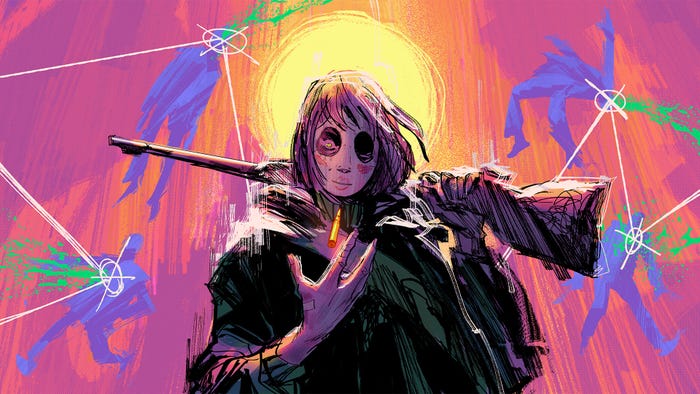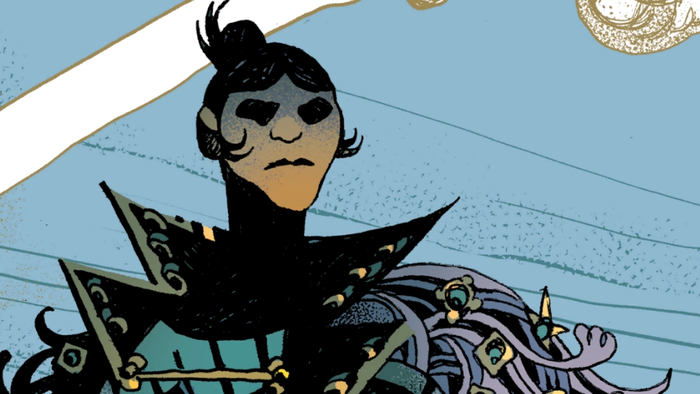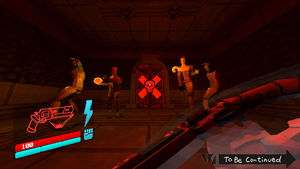Last week, the Digital Games Researchers Association (DiGRA), was in Vancouver for its second bi-annual gathering. The four day event saw academics from around the world gather to present papers on computer games, play computer games, engage in a GPS-enabled pub crawl and variously drink, eat, dance and debate in many of British Columbia's fine establishments.

The industry panel for the session entitled Developers in Play: Changing Views on Game Creation. |
Last week DiGRA, the Digital Games Researchers Association, hit Vancouver for its second bi-annual gathering. The four-day event saw academics from around the world gather to present papers on computer games, play computer games, engage in a GPS-enabled pub crawl, and variously drink, eat, dance, and debate in many of British Columbia's fine establishments (one of which actually did turn the music down when
I told them that we were academics and all we were there for was the booze and arguing - after all, the real business of any conference occurs in the bar).
Before diving into some of the many themes that permeated this year's get-together I should spend a short moment explaining what exactly a Games Researcher is and is not.
Games Researchers are predominantly academics with the odd hybrid professional /journalist/something-or-other who engage in Games Studies. Now, the exact definition of Games Studies is still a hotly debated topic (cf. bar talk above; or for a more sober discussion Espen Aarseth's Computer Game Studies, Year One) but at its core, games studies is the analysis of video games, gamers, and game culture from the perspective of social sciences such as psychology, sociology, communications studies, as well as my own field, philosophy. At the fringes, Games Studies embraces issues such as the process of game design but is very unlikely to be concerned with path-finding algorithms or triangle meshing techniques.
Having said this, in my experience, most Games Researchers are fairly hardcore gamers and a few got tech. For example M. Eladhari is an ex-commercial game developer who now researches AI, emotion and story construction. J. Jull, one of the foremost theorists of games, is also an indie/commercial game developer.
In short, Game Studies is the academic social study of games, gamers, and game culture.
Grrr, Arrg, w00t & other Emotions
The theme of emotion and games threaded its way through the conference this year. One paper that drew much attention was The Psychophysiology of Video Gaming: Phasic Emotional Responses to Game Events by a group of Finnish researchers.
In the study the group monitored a number of physiological indicators of positive and negative emotions such as skin conductance, cardiac interbeat intervals, and a range of involuntary facial muscle reactions, while subjects played a group of video games. The results indicated that players experience highly positive emotions when experiencing seemingly negative game events, e.g. the ball falling off the edge of the lane in
Sega's Super Monkey Ball monkey bowling mini-game.
The data also seemed to indicate that in a first person shooter, the strongest emotional reaction is not related to killing but to one's own death - a result that might have a bearing on the whole video game violence debate. More broadly, the methods used by the team seem to be applicable to play testing and might provide some fascinating insights into what is actually going on in players' heads. The same group also presented a paper on using these insights with bio-feedback to create games that generate user selected emotional states, using so-called Emotion Knobs (Finnish humor or cruel translation - you decide).
Accompanying the Finnish presentation (mercifully given in English) was a paper by Montreal's Bernard Perron titled A Cognitive Psychological Approach to Gameplay Emotions which might have been subtitled: "Taking What We Know From Film Studies About Plot and Viewer Reaction and Applying It to Games." Again, this was an applied
paper which tried to understand just how games and emotions interact. While the work lacked hard data, the numerous examples from games such as ICO, Resident Evil, XIII, etc. made the paper highly applicable to game design.
A scan of the proceedings reveals ten or so other papers dealing with emotion, player motivation, immersion, and one paper on the use of pupil dilation to measure arousal, which sounded scarily like Blade Runner to me.
The Joy-pad of Learning
The most significant emerging topic at DiGRA05 was Games and Learning. This is not surprising given the recent rise in interest in so called "serious games." Indeed, when
the conference closed, a posse of attendees high-tailed it out of Vancouver to Madison, Wisconsin, for Jim Gee's Games, Learning, and Society which ran a couple of days later.
Participants came at this from every conceivable angle: level editing applied to art and design, teaching kids about infectious diseases, games and moral education and, to be completely self referential, game design theory as a game.
The most interesting thing about this trend is that we have moved beyond the simple notion that learning is restricted to simulation games like Sim City providing objective lessons in city planning. Today's scholars have expanded the understanding of what games can teach, how they act as learning tools, and are gaining insights into how we learn.
This work is complemented by the broad research into the meaning and interpretation of games as cultural artifacts by scholars coming from feminist, race and queer studies traditions. A theme that was discussed during coffee breaks was the refreshing thought that some people no long believe that making games which appeal to females equates to liberal use of the color pink.
The future of the DiGRA meeting. |
But back to learning - one research project that might find wide interest is Galarneau's ongoing work on spontaneous learning communities and authentic learning in MMOs. Coming from a commercial background, I can see how the study of social practices and the generation/transmission of information in MMOs could provide insights into corporate knowledge management.
Designs on Designing
As I've already touched on, the process of game design featured in a smattering of papers this year. In addition to individual papers (such as this, this, and this.), the ever-energetic Eric Zimmerman conducted a panel on the relationship between game design and game theory, where the status of game design research and grand formalist theories of play were thrashed within an inch of their lives in a packed and increasingly sweaty room.
Immediately before this, the IGDA's equally energetic Jason Della Rocca hosted a face-off between industry types, including EA's Steve Rechtschaffner, and the gathered throng of pointy heads.
A topic touched on at both sessions was the perceived lack of access to game design in the raw that many academics feel. So, if you or your company would like to be lab rats I'm sure DiGRA would be happy to hear from you, and as any H2G2 fan knows - it's
really the rats that run the lab.
Esoteria without Shame
To close, I want to make sure that I have not left any non-academic with the wrong impression of DiGRA. There is a lot of content that is applicable to the business of computer games, but the conference has not turned into an academic/industry lovefest. Industry participation is very low, lower that I think it should be, and seemingly esoteric content is high. For example there were at least two papers dealing solely with the notion of the magic circle. The narratology vs. ludology war (a dispute so obscure even many games researchers have little idea what it's about) mutated into widespread denial that it had happened/meant anything or was still alive. For those that care, it still bangs away in the attic that the old gods thought they had locked it in. But all this is good, it's diversity, it's new ways of thinking about stuff, and heck, it's fun.
______________________________________________________
About the Author(s)
You May Also Like









